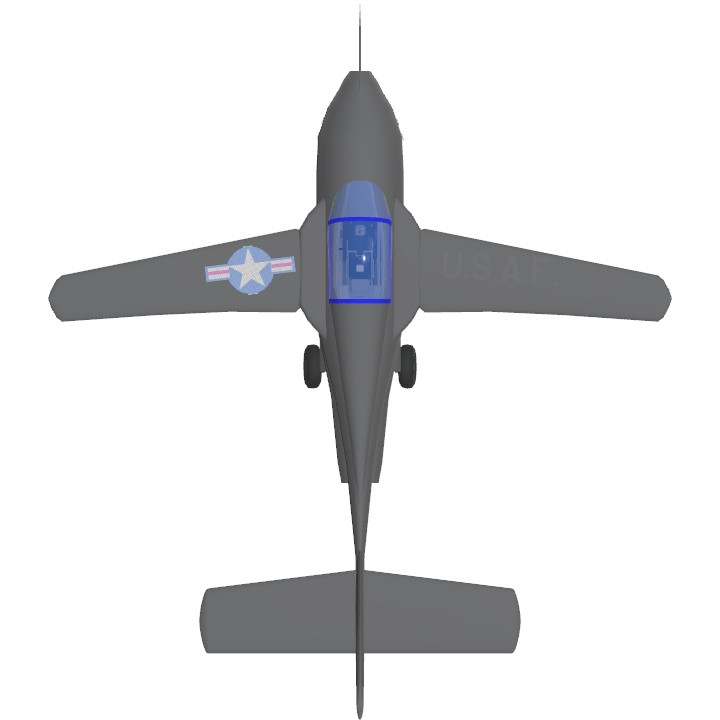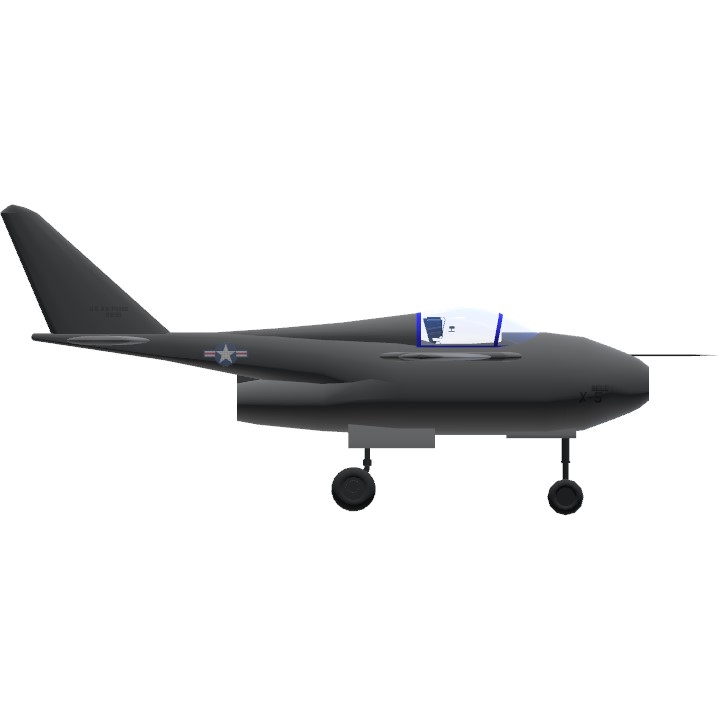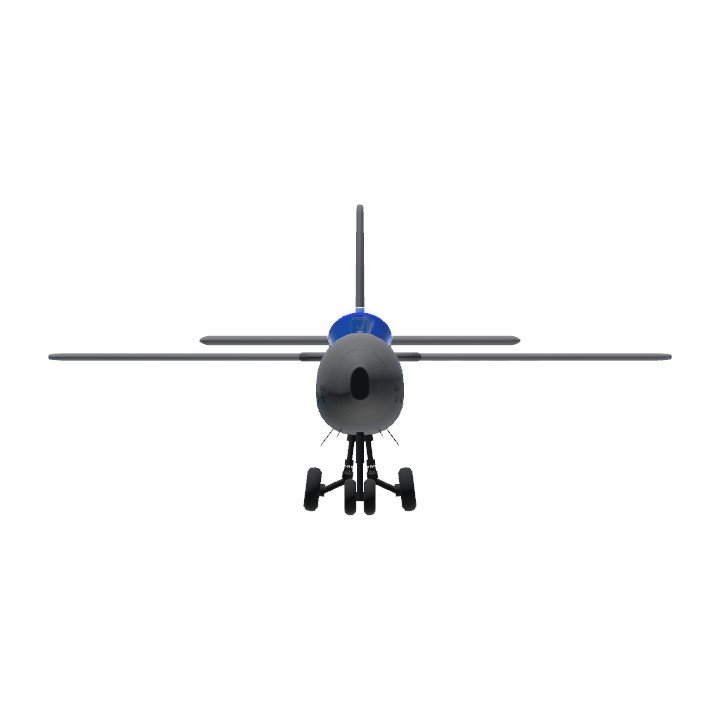A fictional variant of Bell X-5
History
The Bell X-5 was the first aircraft capable of changing the sweep of its wings in flight. It was inspired by the untested wartime P.1101 design of the German Messerschmitt company. In contrast with the German design, which could only have its wing sweepback angle adjusted on the ground, the Bell engineers devised a system of electric motors to adjust the sweep in flight.
Two X-5s were built (serial numbers 50-1838 and 50-1839). The first was completed 15 February 1951, and the two aircraft made their first flights on 20 June and 10 December 1951. Almost 200 flights were made at speeds up to Mach 0.9 and altitudes of 40,000 ft (12,000 m). One aircraft was lost on 14 October 1953, when it failed to recover from a spin at 60° sweepback. Air Force Captain Ray Popson died in the crash at Edwards Air Force Base. The other X-5 remained at Edwards and continued active testing until 1955, and remained in service as a chase plane until 1958.
The X-5 successfully demonstrated the advantage of a swing-wing design for aircraft intended to fly at a wide range of speeds. Despite the X-5's stability problems, the concept was developed to an outboard rather than inboard hinge.
Alternate History
Instead of 2 bell X-5s being built, a third one was built after one of X-5 has crashed due to un-recoverable spin, the 3rd prototype had front swept capability and had less swept angle, however this somewhat fix the previous design, the only problem is that the aircraft gain more lift when fully sweepback, but due to the incident of the previous model the 3rd prototype was also retired in 1958.
Controls
AG1: Canopy
VTOL SLIDER: Flaps
TRIM: Wing Sweepage
Gallery



Isues
- Gains lift when sweptback
- Gains drag when forward swept
- Massive Roll input
Specifications
Spotlights
- StockPlanesRemastered 2.9 years ago
- WinsWings 2.3 years ago
General Characteristics
- Predecessor Variable-sweep Wings Challenge [CLOSED]
- Created On Windows
- Wingspan 27.4ft (8.4m)
- Length 31.7ft (9.7m)
- Height 13.7ft (4.2m)
- Empty Weight N/A
- Loaded Weight 5,168lbs (2,344kg)
Performance
- Power/Weight Ratio 2.934
- Wing Loading 20.7lbs/ft2 (101.1kg/m2)
- Wing Area 249.6ft2 (23.2m2)
- Drag Points 2523
Parts
- Number of Parts 186
- Control Surfaces 7
- Performance Cost 978





This looks an awful lot like a sagittario 2…
Awesome, it’s fly very well even with its small wings